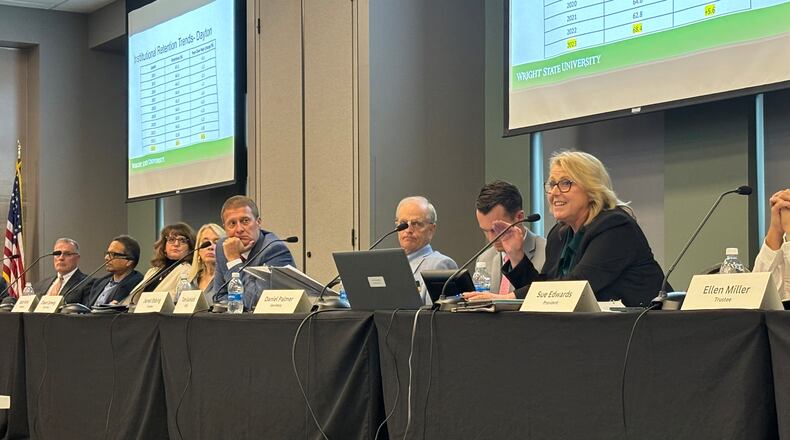Enrollment for first-time, graduate and transfer students are up this year and retention levels were up 5.6%, leading to a 7% increase in enrollment compared to the fall 2023 semester.
It’s also the third consecutive year that the number of first-time, first-year students increased at the university.
Edwards said the work of student success coaches, the financial aid office and advisers to remove barriers to the students has helped the university.
Wright State saw a decline in overall enrollment from about 2015 to 2022, when enrollment hit a low of about 10,798 students across the main campus in Fairborn and the Lake Campus in Mercer County. The university made faculty reductions in 2022 and some staff were laid off prior to that, with WSU citing the need to “right-size.”
This year, the total enrollment is 11,822 students, a 9.5% increase over fall 2022 enrollment.
Susan Schaurer, WSU vice president for enrollment management, noted 363 of the more than 2,000 new first-time students are planning to major in nursing, an in-demand field of work in Ohio. Computer engineering, mechanical engineering and psychology were also popular fields of study.
“Our fall enrollment is another indicator of Wright State’s continued momentum and success,” Schaurer said.
Schaurer said many of the students came from local high schools, with Beavercreek and Centerville named top feeders to WSU.
And the university highlighted that almost 40% of the university’s undergraduate students are Pell recipients, while the national average is 34%.
Fierce competition for smaller graduating classes of students with options outside of going to college or directly into the workforce has meant universities are struggling to attract as many students as they did in the peak of college enrollment in the mid-2010s.
The University of Dayton has been planning to reduce its student headcount by about 10% to 15% and its workforce by a similar amount. UD, one of Dayton’s larger employers, has about 11,000 students overall and 3,700 employees. UD announced some faculty contracts won’t be renewed and programs will be cut last Friday.
About the Author


